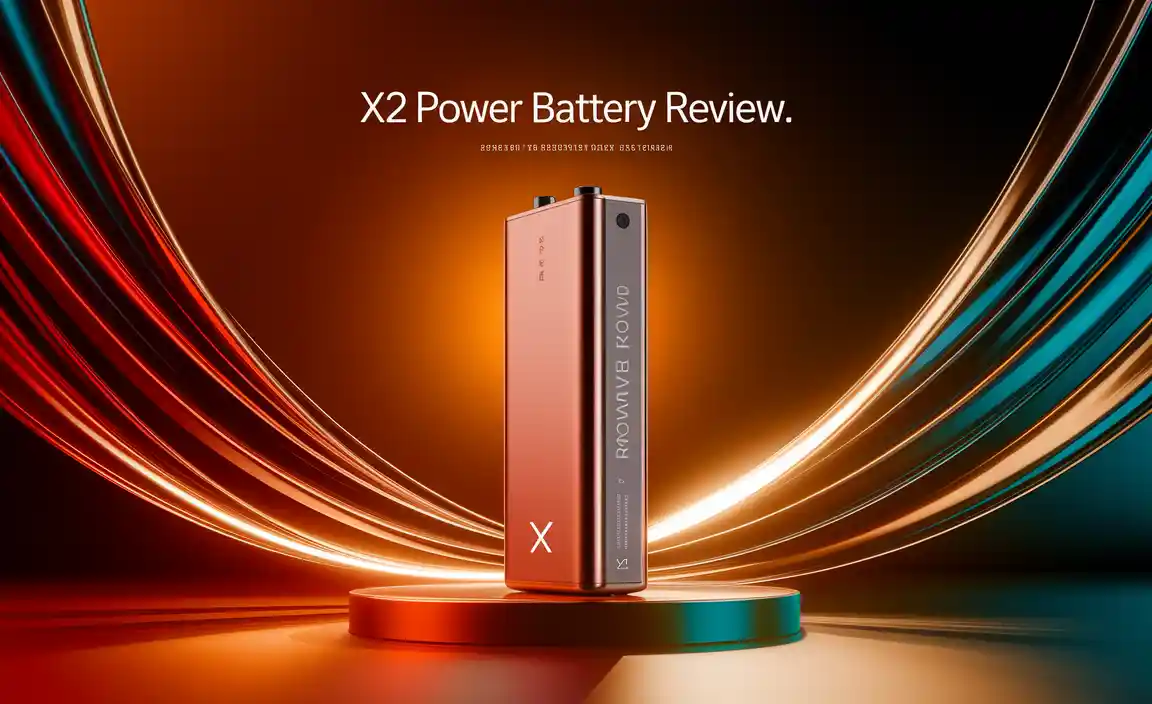Need to replace your car battery? Expect to pay anywhere from $150 to $350 for the battery itself, plus potential installation fees if you don’t do it yourself. The final cost depends on your car’s make/model and the battery type. This guide breaks down everything you need to know to get back on the road without overpaying.
Is your car struggling to start? That familiar click, click, click or a complete blackout can be a real headache, especially when you’re in a hurry. Car batteries don’t last forever, and knowing when it’s time for a change is key to avoiding unexpected breakdowns. It’s a common part of car ownership that often leaves people wondering about the cost and how to go about it. You might feel a bit in the dark, but don’t worry! This guide will walk you through everything you need to know about car battery replacements, from understanding the costs to simple steps for a smooth process. We’ll make sure you feel confident and ready to tackle this common car task.
How Much For Car Battery Change: The True Cost Breakdown
When your car battery needs replacing, it’s natural to ask about the price tag. The cost isn’t just one number; it’s a mix of the battery itself, labor if you have it done, and potentially other small parts. Let’s break down what influences the final figure so you can be prepared.
The Battery Itself: Your Biggest Expense
The car battery is the heart of your vehicle’s electrical system, and its price varies based on several factors. Think of it like buying shoes – there are basic options and premium ones, and the same applies here.
- Brand and Quality: Just like you’d find at a store selling Duracell or Optima batteries, some brands are known for their durability and performance, and they often come with a higher price tag.
- Battery Type: There are different types catering to various vehicle needs. Standard flooded lead-acid batteries are usually the most affordable. Then you have Absorbed Glass Mat (AGM) batteries, which are more expensive but offer better performance and lifespan, especially for cars with lots of electronics like those using navigation or advanced charging systems common in newer vehicles.
- Vehicle Make and Model: Larger vehicles or those with specific battery requirements (e.g., hybrid vehicles, luxury cars with start-stop technology) often need bigger, more specialized, and thus more expensive batteries.
- Warranty: A longer warranty period usually means a higher upfront cost, but it offers peace of mind knowing you’re covered for a significant time.
Labor Costs: The Professional Touch
If you’re not comfortable swapping out the battery yourself, you’ll likely pay for installation. This fee can range from about $20 to $50, but it can be higher at dealerships or specialized service centers.
Many auto parts stores and independent mechanics offer free or low-cost battery installation when you purchase the battery from them. This is a great way to save money if you’re getting the battery there anyway.
Unexpected Costs?
In rare cases, there might be small additional costs. You might need new terminal connectors if yours are corroded or damaged, which is usually a few dollars. Some places also charge a small core fee (around $10-$20) when you buy a new battery, which you get back when you return your old battery for recycling.
Average Car Battery Replacement Costs
To give you a better idea, here’s a general range for what you might expect:
| Cost Component | Typical Range | Notes |
|---|---|---|
| Battery Cost (DIY Purchase) | $100 – $300 | Varies by brand, type, and vehicle. |
| Installation Fee (Separate) | $20 – $75 | Often included with battery purchase at parts stores. |
| Total Cost (DIY) | $100 – $300 | Just the battery price if you install it yourself. |
| Total Cost (Professional Install) | $150 – $350+ | Includes battery and labor. Dealerships may be higher. |
Remember, these are average figures. Your specific cost could be a bit higher or lower. For the most accurate pricing, it’s always best to get quotes from a few local auto parts stores or mechanics.
When To Replace Your Car Battery: Signs and Symptoms
Car batteries typically last between 3 to 5 years, but this can vary based on climate, driving habits, and battery quality. Recognizing the signs of a failing battery can save you from being stranded.
Common Warning Signs:
- Slow Engine Crank: This is often the most obvious sign. When you turn the key, the engine sounds sluggish, like it’s struggling to turn over.
- Dim Lights: Headlights, dashboard lights, or interior lights might seem dimmer than usual, especially when the engine is off or at idle.
- Electrical Issues: Power windows might operate slower, the radio could cut out, or other electrical components may malfunction.
- The Smell of Sulfur: A rotten egg smell coming from under the hood can indicate a leaking or overcharged battery.
- Check Engine Light: While this can mean many things, a battery issue can sometimes trigger the check engine light.
- Swollen Battery Case: If the battery case looks bloated or deformed, it’s a sign of internal damage, often from extreme heat.
- Battery Age: If your battery is over 3-4 years old, it’s wise to have it tested proactively, even if you don’t see obvious signs of failure.
For tech users, it’s worth noting how similar these signs of degradation are to a phone battery. Just like your smartphone might struggle to hold a charge or power certain apps when its battery is old, your car’s battery shows its age through slower performance and less reliable power.
How to Change a Car Battery: A Beginner’s Step-by-Step Guide
You can absolutely change your car battery yourself! It’s a straightforward process that can save you money and give you a great sense of accomplishment. You’ll just need a few basic tools.
Tools You’ll Need:
- A new car battery (make sure it’s the correct size and type for your vehicle)
- Wrench set (usually 10mm and 13mm are common for battery terminals)
- Gloves (to protect your hands from acid)
- Safety glasses (essential for eye protection)
- Wire brush or battery terminal cleaner
- Battery terminal protector (optional, but recommended)
- A small towel or rag
- A way to secure the old battery for recycling (like a sturdy box or your new battery’s box)
Safety First!
Batteries contain sulfuric acid and can produce flammable gases. Always work in a well-ventilated area. Never smoke or have open flames near the battery. Ensure the engine is off and the keys are out of the ignition. Wear safety glasses and gloves.
Step-by-Step Process:
- Locate the Battery: Open your car’s hood. The battery is usually a rectangular box with two cable connectors (terminals) on top, often near the front of the engine bay on the driver’s or passenger’s side.
- Identify Terminals: You’ll see a positive (+) terminal and a negative (-) terminal . The positive is usually marked with a red or ‘+’ symbol, and the negative with a black or ‘-‘ symbol.
- Disconnect the Negative Terminal FIRST: Using your wrench, loosen the nut on the clamp holding the black (negative) cable to the battery post. Gently twist and pull the cable off the post. Move it aside so it can’t accidentally touch the battery terminal. This is the MOST IMPORTANT safety step to prevent sparks.
- Disconnect the Positive Terminal SECOND: Now, loosen the nut on the clamp holding the red (positive) cable. Twist and pull this cable off the post.
- Remove the Battery Hold-Down Clamp: The battery is usually secured by a bracket or clamp at its base or top. You’ll need to loosen or remove the bolts holding this clamp in place with your wrench. Keep these bolts safe!
- Lift Out the Old Battery: Carefully lift the old battery straight up and out of its tray. Batteries are heavy, so be prepared for the weight. If it’s stuck, check if you missed any hold-down bolts.
- Clean the Tray and Terminals: Use your wire brush or terminal cleaner to clean any corrosion off the battery tray and the cable clamps. A clean connection ensures good power flow. Wipe down the tray with your rag.
- Install the New Battery: Carefully lower the new battery into the tray, making sure it’s oriented correctly (positive and negative terminals in the same position as the old one).
- Secure the New Battery: Reinstall the hold-down clamp and tighten its bolts to keep the battery from shifting. It should be snug but not so tight that you risk cracking the battery case.
- Connect the Terminals (Reverse Order):
- Connect the red (positive) cable clamp to the positive (+) terminal of the new battery. Tighten the nut with your wrench.
- Connect the black (negative) cable clamp to the negative (-) terminal. Tighten the nut.
Remember: Positive first, negative last when connecting.
- Apply Terminal Protector (Optional): If you have battery terminal protector spray or grease, apply a thin layer to the terminals to help prevent future corrosion.
- Dispose of the Old Battery: Never throw an old car battery in the trash. It’s harmful to the environment. Most auto parts stores and service centers accept old batteries for recycling. Many places will even give you a credit (core refund) when you return them.
Once complete, start your car to test it out! If you notice any warning lights, double-check your connections.
Car Battery Maintenance Tips
Even with regular use, a few simple habits can help extend the life of your car battery.
- Keep it Clean: Regularly check the battery terminals for corrosion (a white or bluish powdery substance). Clean them with a wire brush and a baking soda/water paste.
- Ensure a Secure Fit: Make sure the battery is firmly held in place. A loose battery can vibrate and get damaged.
- Avoid Short Trips: Frequent short trips don’t give the alternator enough time to fully recharge the battery.
- Turn Off Electronics: Make sure headlights, radio, and other accessories are off when the engine is not running. This is similar to conserving battery life on your power bank to maximize its use.
- Test Regularly: Especially as the battery approaches 3 years old, have it tested by a professional. Many auto parts stores offer free battery testing.
- Protect from Extreme Temperatures: Extreme heat or cold can shorten a battery’s life. If you live in an area with harsh weather, take extra care and consider insulation or covers if recommended for your vehicle.
What About Other Batteries: Phone, Power Bank, and Adapters?
While car batteries are robust, they share the fundamental principle of storing and delivering electrical energy with many other devices we use daily. Understanding these parallels can demystify battery technology.
- Phone Batteries (like smartphones, tablets): These are typically Lithium-ion batteries. They degrade over time, losing their ability to hold a charge, much like a car battery. Signs of a failing phone battery include faster draining, the phone shutting down unexpectedly, or the battery swelling. Replacing a phone battery is often more complex than a car battery and usually requires professional help or specialized tools for DIY.
- Power Banks: These portable chargers house multiple smaller Lithium-ion batteries to give your devices an on-the-go boost. Their lifespan is also limited, and they lose capacity with charge cycles. Keeping them charged and avoiding extreme temperatures helps Prolong their life, similar in principle to car batteries.
- Chargers and Power Adapters: These are crucial partners to batteries. They regulate the flow of electricity from a power source (like a wall outlet) to either the device’s battery or directly to the device. A faulty charger can damage a battery or charge it inefficiently. Always use the correct, reputable charger for your devices.
The core takeaway is that all rechargeable batteries have a finite lifespan and require care. Just as you’d monitor your car’s battery health, being mindful of your other electronic devices’ power sources ensures they function reliably.
Car Battery Recycling: Doing Your Part
Car batteries are among the most recycled consumer products in the United States. This is essential because they contain lead and sulfuric acid, which are toxic and harmful to the environment if disposed of improperly.
Why Recycle?
- Environmental Protection: Prevents hazardous materials from polluting soil and water.
- Resource Conservation: Recycling allows valuable materials like lead and plastic to be reused, reducing the need for new mining.
- Legal Requirements: Many states have laws requiring proper disposal and recycling of lead-acid batteries.
As mentioned earlier, when you buy a new battery, you’ll likely pay a small core charge. This is an incentive for you to return your old battery. Most places that sell car batteries will take your old one back for safe and proper recycling, often giving you a refund on that core charge.
Frequently Asked Questions (FAQ) About Car Battery Changes
Q1: How can I tell if my car battery is dead or just needs cleaning?
A: A dead battery usually won’t crank the engine at all or will crank very slowly. If your car still starts but is acting up, or if you see white/blue powdery corrosion on the terminals, cleaning might help. However, if the battery is old (3-5 years), it’s likely failing and needs replacement, even after cleaning.
Q2: Can I jump-start my car if the battery is completely dead?
A: Yes, you can often jump-start a car with a dead battery using jumper cables and another vehicle. However, if the battery is old or damaged, a jump-start might only be a temporary fix, or it might not work at all. It’s also important to follow the correct jump-starting procedure to avoid damage to either car’s electrical systems.
Q3: How long does a car battery typically last?
A: On average, a car battery lasts between 3 to 5 years. Factors like climate (extreme heat or cold), driving habits (frequent short trips), and the quality of the battery can affect its lifespan.
Q4: If I replace the battery myself, will I lose my car’s radio presets or other settings?
A: In many modern cars, disconnecting the battery will reset your radio presets, clock, and sometimes other computer settings. Some vehicles have a small “memory saver” device that can be plugged in to maintain power to these systems during battery replacement, or you can use a small power bank designed for this purpose connected to the OBD-II port (though this requires a bit more technical know-how). If not, you’ll likely need to re-enter your settings after the new battery is installed.
Q5: Where is the best place to buy a car battery?
A: You can buy car batteries at auto parts stores (like AutoZone, Advance Auto Parts), big-box retailers (Walmart, Costco), car dealerships, and some mechanic shops. Auto parts stores often offer good prices, free testing, and sometimes free installation, making them a popular choice for DIYers and those seeking quick service.
Q6: Is it worth buying a more expensive AGM battery?
A: For many cars, especially those with advanced features like start-stop technology, GPS, and multiple electronic accessories, an AGM (Absorbed Glass Mat) battery is worth the extra cost. They offer better performance, longer life, and handle deep discharge cycles better than traditional flooded batteries. Check your car’s manual or consult a professional to see if an AGM is recommended or required for your vehicle.
Conclusion
Replacing your car battery doesn’t have to be a daunting or expensive task. By understanding the cost factors, recognizing the signs of a failing battery, and knowing the



